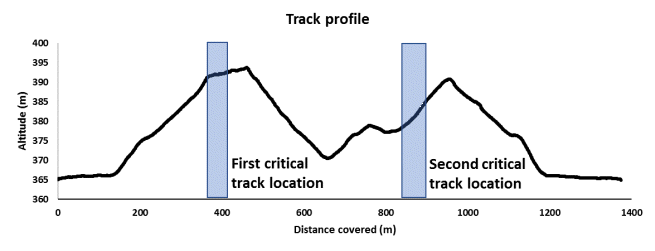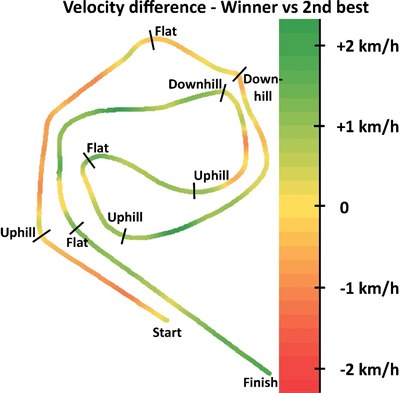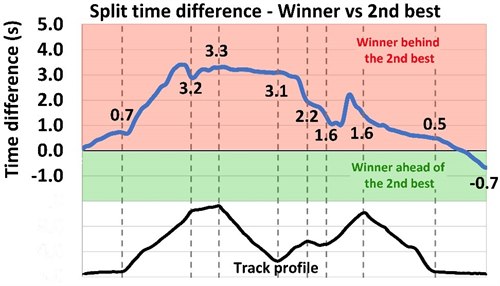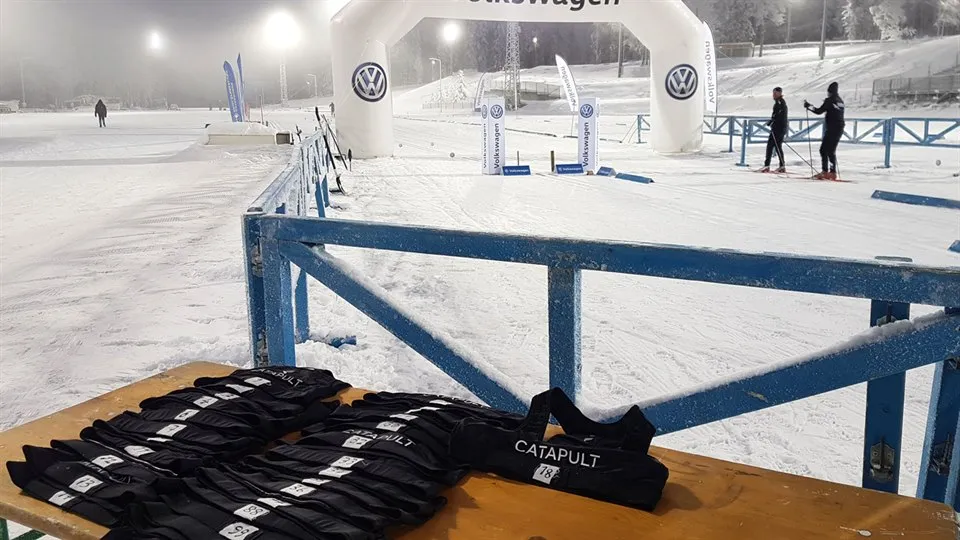Global satellite systems for tactical analysis in cross‑country skiing
How the use of a customised satellite navigation device can help in the analysis of micro-pacing strategies and performance in cross-country skiing
The physiological and technical capabilities of a cross-country skier are more or less fixed prior to the start of a competition. But can we influence an athlete’s race tactics and micro-pacing strategies during competition in order to improve and optimize performance?
The uphill sections are decisive
The track profile has a significant effect on how a skier paces their effort in a cross-country skiing competition. Energy expenditure is higher in uphill sections compared to flat sections, and downhill sections have even lower energetic demands. This variable exercise intensity throughout the track allows the skier to use anaerobic energy to work at a higher intensity during uphill sections for short periods of time. Lower exercise intensities during downhill sections then enable athletes to recover, prior to subsequent uphill and flat sections.
Cross-country skiing studies have shown that uphill sections are the most important parts of the track in determining overall skiing performance. Yet to be addressed in the scientific literature, however, is the pacing within a specific track section. For example, is there a difference between high- and low-performing athletes in how they pace an individual track section? Are more successful athletes faster in every part of a track section, or do they pace themselves faster in some distinct parts of a section?
Critical points on the track
In order to answer these questions, we measured high level skiers’ locations and velocities with a customised satellite navigation (Catapult Sports, OptimEye S5) throughout a classic sprint qualification race performed at the ski stadium in Östersund, Sweden. When analyzing the results for all of the measured skiers, the critical track locations were identified as:
- the flat part after the first long uphill;
- the first half of the last long uphill (see Figure 1, below).
The first critical point was the skier’s ability to accelerate and acquire a high velocity shortly after the end of the first uphill. The skiers achieving the best results were able to accelerate faster out of the uphill and win time on the subsequent flatter section. The second critical part was the first half of the last long uphill, where better-performing skiers paced themselves faster compared to the lower-performing skiers. The last uphill was followed by a long downhill section with plenty of time for recovery, so it seems that a high intensity from the beginning of the uphill was optimal. This would allow a skier to exhaust their limited high-energy anaerobic energy resources on the last uphill and win time against other competitors.

Figure 1. Two critical track locations, where higher-performing skiers were able to win time against lower-performing athletes.
Analysing individual athletes
In addition to the group analyses (i.e., comparing the more- and less-successful athletes), GPS units can be used to pinpoint the track locations and pacing strategies where small time gains and losses occur for specific individuals. In Figure 2, below, two different pacing strategies used by the two best athletes in the sample are illustrated. In this example, the second best athlete loses 1.1 second against the winner in the last long downhill and another 1.2 seconds in the final straight. Neither of these track sections were decisive track locations when considering the whole group of skiers, but for these two athletes the last downhill and flat made a significant difference. This type of information and analysis can be extremely useful in optimizing cross-country skiing pacing strategies at the elite level, when the time differences between success (winning) and failure (losing) are very small.


Figure 2. Individual pacing strategy comparisons between the two best skiers. The winner of the race was more than 3 seconds slower than the second-best skier in the first flat and uphill parts of the track. However, the winner was faster on the later track sections and was able to get ahead of the second-best skier during the finishing straight.
Author and contact person:
Simo Ihalainen, senior researcher at the Swedish Winter Sports Research Centre
Further reading on this topic:
- Andersson EP, Govus A, Shannon OM & McGawley K. (2019). Sex differences in performance and pacing strategies during sprint skiing. Front Physiol, 10:295.
- Gløersen Ø, Kocbach J & Gilgien M. (2018). Tracking performance in endurance racing sports: evaluation of the accuracy offered by three commercial GNSS receivers aimed at the sports market. Front Physiol, 9:1425.
- Gløersen Ø, Losnegard T, Malthe-Sørenssen A, Dysthe DK & Gilgien M. (2018). Propulsive power in cross-country skiing: application and limitations of a novel wearable sensor-based method during roller skiing. Front Physiol, 9:1631.
- Karlsson Ø, Gilgien M, Gløersen ØN, Rud B & Losnegard T. (2018) Exercise intensity during cross-country skiing described by oxygen demands in flat and uphill terrain. Front Physiol, 9:846.
